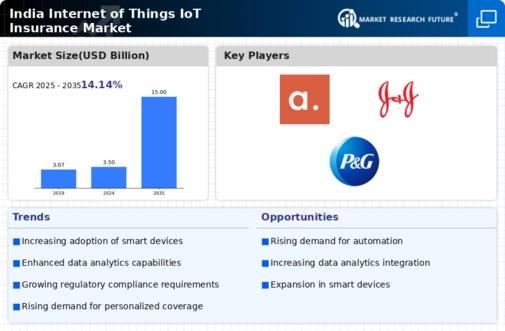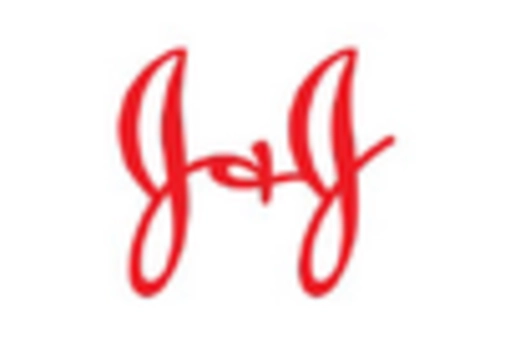Emergence of Smart Cities
The development of smart cities in India is a significant catalyst for the Global India Internet of Things IoT Insurance Market Industry. Smart city initiatives integrate IoT technologies to enhance urban living, improve infrastructure, and optimize resource management. As cities adopt these technologies, the need for insurance products that cover IoT-related risks becomes increasingly apparent. The expansion of smart city projects is anticipated to drive the market's growth, contributing to the overall valuation of 15 USD Billion by 2035, as urban planners and governments seek to mitigate potential liabilities.
Market Growth Projections
The Global India Internet of Things IoT Insurance Market Industry is projected to experience substantial growth, with estimates indicating a market value of 3.5 USD Billion in 2024 and a remarkable increase to 15 USD Billion by 2035. This growth trajectory suggests a compound annual growth rate of 14.14% from 2025 to 2035, highlighting the increasing recognition of the need for insurance solutions tailored to IoT technologies. The expansion of IoT applications across various sectors is likely to drive this growth, as businesses seek to mitigate risks associated with their digital transformations.
Rising Adoption of IoT Devices
The increasing adoption of Internet of Things devices across various sectors is a primary driver for the Global India Internet of Things IoT Insurance Market Industry. As businesses integrate IoT technologies into their operations, the need for insurance coverage to protect these assets becomes evident. For instance, industries such as manufacturing and agriculture are leveraging IoT for efficiency and productivity, leading to a projected market value of 3.5 USD Billion in 2024. This trend indicates a growing recognition of the risks associated with IoT deployments, thereby creating opportunities for tailored insurance products.
Increased Cybersecurity Concerns
As IoT devices proliferate, the associated cybersecurity risks have become a pressing concern for businesses, driving demand in the Global India Internet of Things IoT Insurance Market Industry. Cyberattacks targeting IoT systems can lead to substantial financial losses and reputational damage. Consequently, companies are increasingly seeking insurance solutions that cover cyber risks related to IoT devices. This trend is expected to fuel market growth, with a compound annual growth rate of 14.14% projected from 2025 to 2035, as organizations prioritize risk management strategies to safeguard their IoT ecosystems.
Regulatory Support and Frameworks
Government initiatives and regulatory frameworks supporting IoT implementation significantly influence the Global India Internet of Things IoT Insurance Market Industry. Policies aimed at enhancing digital infrastructure and promoting technology adoption encourage businesses to invest in IoT solutions. The Indian government has launched various programs to foster innovation in technology, which indirectly boosts the insurance market as companies seek coverage for their IoT investments. This supportive environment is likely to contribute to the market's growth, with expectations of reaching 15 USD Billion by 2035, reflecting a robust regulatory landscape.
Growing Awareness of IoT Insurance Solutions
There is a growing awareness among businesses regarding the importance of IoT insurance solutions, which is propelling the Global India Internet of Things IoT Insurance Market Industry. As organizations recognize the potential risks associated with IoT deployments, they are more inclined to seek specialized insurance products. This heightened awareness is likely to lead to increased demand for coverage options tailored to IoT technologies, thereby contributing to the market's expansion. The anticipated growth trajectory, with a market value of 3.5 USD Billion in 2024, reflects this shift in understanding and prioritization of risk management.














Leave a Comment